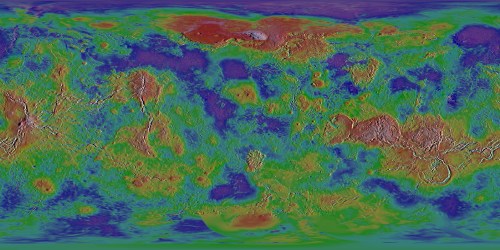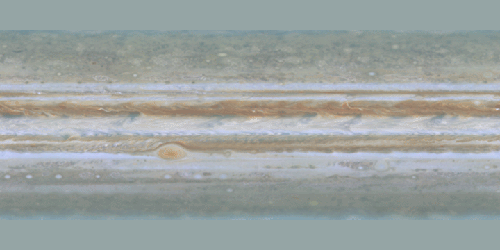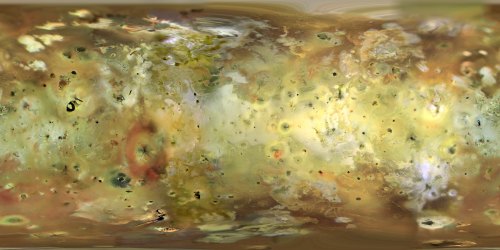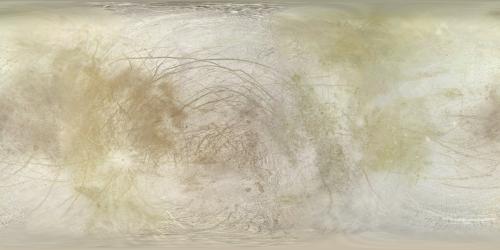
JPEG (1.8MB), TIFF (6MB)- (images updated 5/12/2004)

We are using this map (4096x8192) of the Moon created by Jens Meyer.

I am working to utilize a spectacular Jupiter movie from Cassini (2D Interpolated) for the Science on a Sphere. I applied some simple processing to produce this 28MB tar file (updated 7/7/2004) containing separate GIF images for the 197 frame color movie. The resolution of the image is 2 pixels per degree and the original animiated GIF was cropped to 360x720 pixels. The data void space near the poles (outside of +/-68 degrees latitude) was filled with a neutral color.
Io
For the second image a near-hemispheric Galileo mosaic was used for about 40% of the map. This was reprojected from a vertical perspective projection (spacecraft view - similar to orthographic) onto the cylindrical lat/lon grid. For the third image a portion of this Galileo mosaic was reprojected to cover about 10% of the map. The color balance was adjusted and saturation was subdued to undo the "enhanced" color in the posted Galileo image. The fourth image comes from a portion of this Galileo mosaic, reprojected to cover the remaining 10% of the map. This fourth color image was augmented by higher resolution intensity information from a black and white USGS map.
Seams were blended gradually between the various images to reduce their prominence. Some further color adjustments are being made to compensate for the extended wavelength range of the Galileo filters.


We are using a modified version of
this map
of Ganymede created by Bjorn Jonsson.
We are using a modified version of
this map
of Callisto created by Bjorn Jonsson.
We are using
this 2K map
of Enceladus created by
Philip J. Stooke
and
Jens Meyer.
Callisto
Saturn
Enceladus
Tethys

JPEG,
TIFF-
(image updated 12/6/2004)
Titan
